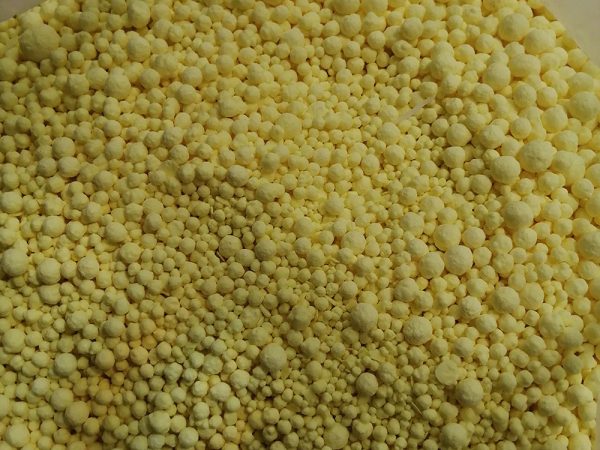Industrial sulphur powder and various sulphur powder and sulphur block products are all made from sulphur. We know that sulfur itself is unstable from chemical analysis alone. It is necessary to improve the stability of sulfur if the product is to be effectively utilized.
Stability of sulfur: There are three crystal forms of sulfur block, namely orthorhombic sulfur, monoclinic sulfur and amorphous sulfur, among which the orthorhombic sulfur is the Z stability, and the general commodities are two crystal forms. The stable one below 95.6℃ is orthorhombic sulfur Sα, the melting point is 112.8℃; the stable one above 95.6℃ is monoclinic sulfur Sβ, the melting point is 114.5℃. Both forms of sulfur exist in the eight-membered ring form S8, but their lattice arrangements are different. Insoluble sulfur products without effective chemical stabilization are still unstable and can even be reduced to soluble low-molecular-weight orthorhombic sulfur within a few days. As a metastable substance, insoluble sulfur tends to return to soluble low-molecular-weight orthorhombic sulfur in the natural environment. In the field environment, if sulfur is exposed to sunlight for a long time, under the action of ultraviolet radiation, high temperature, microorganisms and oxygen, insoluble sulfur will disintegrate, reduce to soluble low molecular orthorhombic sulfur, and gradually oxidized to sulfur dioxide, absorbing water. After becoming sulfurous acid, it can be converted into sulfuric acid if further oxidized. Even the insoluble sulfur treated with chemical stabilizer will still have obvious reduction effect under long-term storage conditions, under the action of heat above 105 ℃ near the melting point, or under the induction of alkaline substances, especially amines.
Methods to improve sulfur stability: halogens and their derivatives can be used as insoluble sulfur stabilizers, such as iodine, bromine, ferric chloride, titanium tetrachloride, phosphorus tetrachloride, phosphorus pentachloride, silicon tetrachloride , sulfur monochloride, sulfur oxychloride and phosphorus oxychloride, etc., as well as dilute acids, hydrogen sulfide, sulfides, hydrocarbon oils, olefins, terpenes, some Lewis acid-base systems, etc. The halogen atoms, hydrogen atoms, etc. in the stabilizer form bonds with the sulfur atoms at both ends to stabilize the insoluble sulfur.
Doing a good job of the above-mentioned sulfur stabilization method can effectively improve the instability of sulfur.

